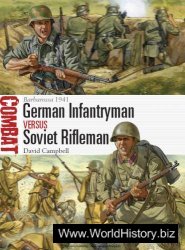We now come to the practicalities of military cooperation between 1920 and 1933, and its development during this time span. As mentioned earlier, two time phases can be clearly distinguished.
First, the early ‘Rapallo phase’ of military cooperation from the first secret contacts in 1920 to about 1925/26: this phase includes the year 1923, the year of major crisis for the Weimar Republic which began with the occupation of the Ruhr area by French and Belgian troops. Germany, unable to defend itself with its small 100,000-strong army, and without allies, finds itself in a desperate political and security situation. In February a military delegation under the chief of the clandestine general staff of the Reichsheer, the so-called Truppenamt, General Mayor Otto Hasse, went to Moscow for talks with his Soviet counterpart, Army Commander Pavel
Lebedev, and his deputy Boris Shaposhnikov, in order to examine the possibility immediate military aid for Germany. A second delegation headed by the chief of staffs of the Army Ordnance Office (Heereswaffenamt) followed three months later and inspected the Russian armaments industry. In the summer of that year, the German attempt to win Moscow over for a security alliance in case of a Polish attack on the Reich failed. Moscow’s intermediary, the chief of the Soviet air combat forces, Arkadii Rozengol’ts, advised German chancellor Cuno, during a top secret meeting in a private Berlin flat, that Germany was far too weak in military terms at present to be considered by Moscow as an alliance partner. Both countries together would have to become strong again before an open confrontation with the Entente could be risked.22 This phase is characterized by the lack of success in most economic-military undertakings to produce arms under concession - mostly for two reasons:
1. Lack of financial resources.
2. Serious problems with private sector partners called in by the German side because they followed their own commercial interests. Just one example was the aircraft manufacturer Junkers with a branch near Moscow which never really went into production because of economic problems, and went bankrupt as early as 1925.23
The second phase is the ‘Locarno phase’ of military cooperation after 1926: this phase is typified by a fairly successful cooperation in the areas of arms development and testing as well as training of military cadres. Arms trials at the German test sites - aircraft in Lipetsk, tanks in Kazan’, chemical weapons in Sikhanii near Vol’sk on the Volga - reached their peak in 1930 and 1931.24 The same applied to the extensive exchange of officers from both armies. One reason for this success was probably because any cooperation was purely between government bodies, mostly military, to the exclusion of all private sector partners, which created a structural symmetry between all parties involved. Another reason was the closer connection sought by German political and military bodies after 1926, and in particular the end of the long-lasting rivalry between the Foreign Ministry and the Army Command (Heeresleitung), which put German arms policies on a much broader footing than before.25




 World History
World History









